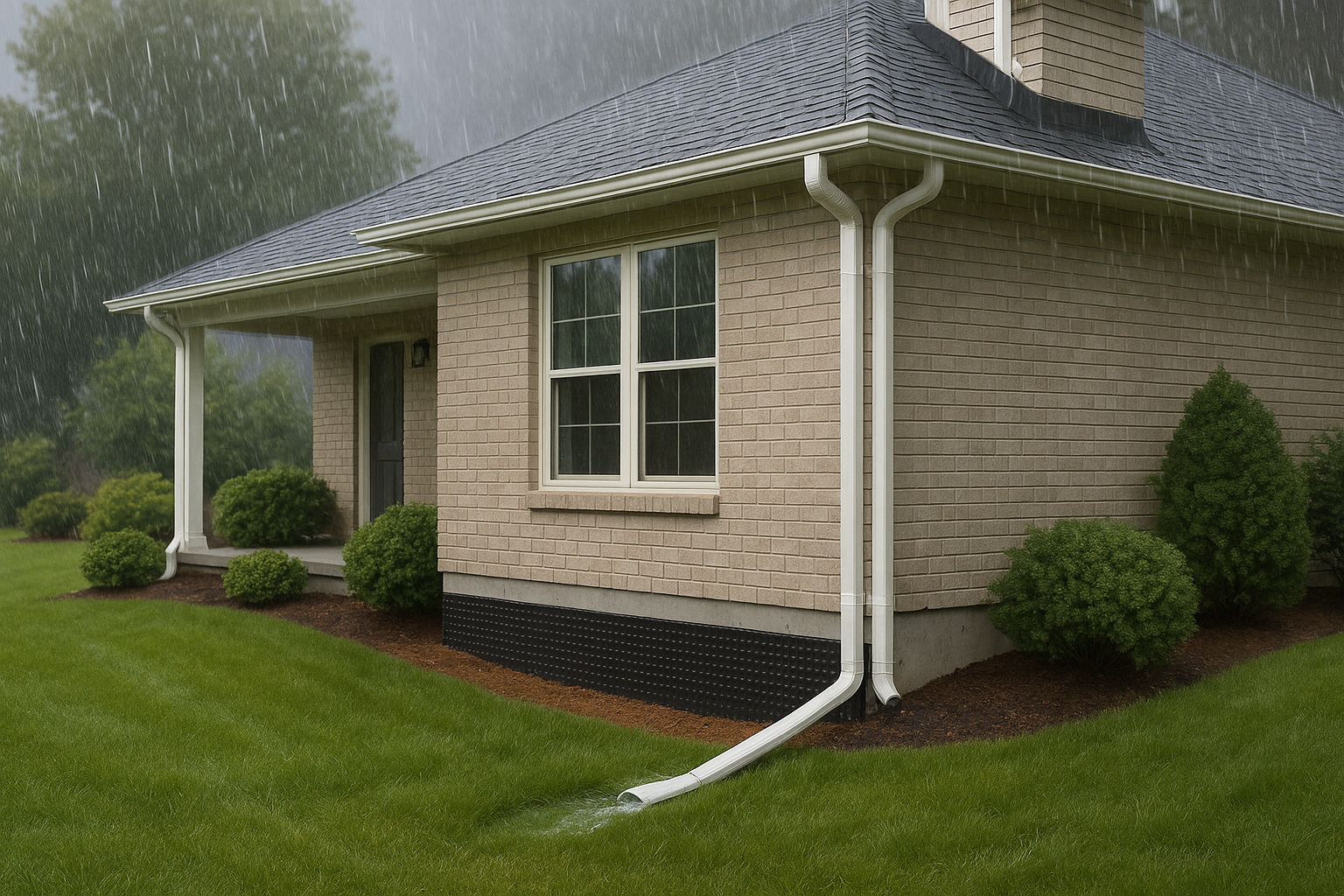Water intrusion often targets overlooked foundations, threatening the durability and safety of entire homes. While water damage in living spaces attracts immediate attention, hidden seepage beneath the structure silently destroys support systems, breeding expensive problems. Learning about the causes, recognizing warning signs, and taking decisive action shields your property from these invaders. Protecting the foundation keeps your home stable, safe, and free from escalating repair bills. This article gives you a deep, actionable perspective on safeguarding your home’s foundation from water intrusion with practical steps for lasting peace of mind.
Understanding Foundation Water Intrusion
Foundation water intrusion refers to unwanted water entering the structural base of your home. Even small amounts of moisture can create long-term damage when allowed to linger. Repeated exposure steadily breaks down cement and concrete, softens support materials, and invites fungal growth. Every drip, puddle, or patch of dampness has consequences. The threat goes beyond aesthetics. Once water penetrates below grade, it disrupts the equilibrium of your home’s entire support network.
This problem often develops slowly, with water quietly moving through soil, slipping into tiny cracks, or seeping along pipe openings. Homeowners frequently underestimate the long game water plays. What begins as a minor nuisance can escalate to widespread mold, shifting floors, and dangerous structural weaknesses. By dedicating attention to the perimeter and base of your property, you create a formidable barrier against an otherwise relentless force.
Common Causes of Foundation Water Intrusion
Water finds entry around structures that lack proper defense and direction. The majority of foundation seepage stems from external factors. Understanding these causes makes prevention far more effective.
Poor Drainage Systems: Inadequate drainage leaves water pooled along your foundation. Whether due to poorly designed systems or blockages, this allows fluid to collect and exert significant hydrostatic pressure on walls. Over time, this pressurized moisture works its way through even the tightest flaws in concrete or masonry, often leading to indoor seepage. [Source]
Improper Grading: The angle of the surrounding soil determines whether water flows away from or toward your foundation. When soil slopes toward the home, runoff accumulates at the base, repeatedly saturating critical areas. Sites with improper grading routinely suffer from recurring seepage and shifting soil, causing increased pressure against foundation walls. [Source]
Clogged Gutters and Downspouts: Gutters filled with debris act as dams, forcing rain to overflow. Water drops next to your foundation, often in heavy sheets. Over time, this consistent wash erodes soil and concentrates moisture along the perimeter. If downspouts are missing or too short, they deposit water too close to the home, compounding the threat. [Source]
Cracks in Foundation Walls or Floors: Structural cracks, whether hairline or visible, serve as highways for water intrusion. The presence of cracks means water can penetrate with little resistance. Concrete constantly responds to temperature, pressure, and shifts in underlying soil. Any fracture, however minor, invites further breakdown and larger leaks. [Source]
High Water Table or Saturated Soil: Homes built in areas with elevated groundwater face challenges regardless of rainfall frequency. Persistent saturation increases outside pressure on the foundation wall. As moisture levels climb, so does the risk of seepage through even the best-protected foundations. [Source]
Warning Signs of Foundation Water Intrusion
A vigilant eye for developing symptoms can save you thousands. Delays lead to compounded issues that often require large-scale restoration.
Damp or Wet Basement Walls: Water stains, dark patches, or visibly wet masonry indicate seepage somewhere along the foundation line. Persistent moisture often signals an untreated crack or breach. [Source]
Musty Odors: A large percentage of mold and mildew outbreaks begin in basements where humidity and water entry occur unnoticed. A constant musty smell signals biological growth, driven by excessive moisture. Pay attention to any lingering scents, which thrive even in hidden areas. [Source]
Cracks in Walls or Floors: New cracks, or those growing in size, warn of shifting conditions beneath your home or unresolved water problems. Address them quickly before they become access points for further intrusion. [Source]
Efflorescence: A white powdery residue often forms on interior walls where water has moved through. These mineral deposits mark the last stop for evaporating moisture, leaving a visual sign of continued leakage. [Source]
Puddles or Standing Water: The most obvious symptom, pools of water in basements or adjacent to the house, require immediate attention. Any consistent pooling reflects drainage or grading issues that need fast correction. [Source]
Observing even one of these warning signs means corrective measures are required. Treating sources quickly stops small moisture problems from growing into significant threats to your home’s stability.
Strategies to Prevent Foundation Seepage
Protecting your home from water intrusion involves a strategic approach that blocks, redirects, and manages water in all conditions. Each property will benefit from a combination of these efforts, adjusted for climate and topography.
Clean and Maintain Gutters: Remove leaf litter and debris at least twice per year, especially before and after storm seasons. Overflowing gutters pour water in sheets down siding, undermining the foundation and saturating the soil right next to the structure. Keeping these channels open keeps water moving safely away. [Source]
Extend Downspouts: Ensure each downspout deposits water five to ten feet from the foundation. Extensions prevent titanic amounts of water from reentering the subsurface near your home’s core during storms. Watch for pooling after rain as a quick test that your downspouts reach far enough out. [Source]
Grade the Yard Properly: All soil adjacent to the house should slope away at a gentle gradient. Fill in low spots annually with clean topsoil, compacting it as you go. Professional grading projects may be needed in cases of large depressions, old homes, or severe settling. This one-time investment strengthens the long-term health of your foundation. [Source]
Install and Maintain Sump Pumps: Sump pumps offer peace of mind for homes in low-lying or high-water-table areas. These systems automatically remove water collecting beneath the house, channeling it safely away. Test your sump pump quarterly by pouring in water and observing the system cycle through. Keep the pit clean and watch for unusual noises that might suggest repairs are needed. [Source]
Waterproof the Foundation: Exterior waterproofing treatments form an impervious barrier on outside walls. Waterproof coatings and membranes prevent water from ever reaching the interior, offering maximum protection for years. For existing small leaks, interior sealants provide a quick fix, though their strength remains limited versus high-pressure groundwater. Periodically reseal areas, especially after severe weather or visible cracking. [Source]
Interior and Exterior Drainage Systems: Interior drain tiles, installed underneath the basement floor, channel water to sump pits. This controlled method equalizes hydrostatic pressure and greatly reduces indoor moisture. Exterior French drains provide relief for properties prone to excessive saturation, dispersing unwanted water before it can approach the home. These solutions function best when customized by professionals after evaluating soil conditions and climate. [Source]
Regular Inspection and Maintenance: Homeowners should walk the property every few months, inspecting the perimeter, walls, and flooring for developing issues. Look for discoloration, new cracks, soft patches, or musty scents. The sooner problems are detected, the more affordable and effective repairs become. Maintain landscaping so large trees do not direct runoff toward your home and invasive roots do not disturb the earth supporting your foundation.
Adopting these measures dramatically reduces your risk. Each action creates an extra layer of protection. When combined, these habits increase your chances of a dry, resilient foundation resistant to intrusion across seasons and storms.
Why Professional Assessment Makes a Difference
Entrusting foundation health to trained professionals brings expert guidance and effective repairs. Subsurface seepage, hidden cracks, and drainage system failures sometimes go unnoticed without a skilled inspection. Austin Hi-Tech Restoration offers skilled evaluation and a wide range of services to stop and reverse foundation water intrusion.
Professional teams use specialized tools such as moisture meters, infrared cameras, and pressure gauges to detect small leaks and vulnerabilities. Repair crews handle everything from minor sealing to full waterproofing upgrades, drainage system redesigns, and foundation crack repair. Homeowners also benefit from advice on maintaining soil health, scheduling inspections, and selecting sump pump systems tailored to local rainfall and groundwater trends. [Contact Austin Hi-Tech Restoration for more information]
Opting for professional intervention at the first sign of trouble prevents escalating issues and preserves your home’s value. Restoration and prevention services often come with warranties that boost future peace of mind as well.
Long-Term Benefits of Preventing Foundation Seepage
Waterproofing and drainage strategies do more than keep basements dry. They extend the usable life of your foundation, prevent mold, protect air quality, and save you from the extensive repairs linked to chronic moisture exposure. Homes protected against water intrusion maintain better resale value, lower insurance costs, and offer a safer environment for occupants.
Acting on small problems right away helps owners avoid large, disruptive repair projects. Regular maintenance requires modest investments of time and money, yet brings exceptional long-term returns. Even homes in high-rainfall or flood-prone zones can reduce risk through a combination of the steps described above. Homeowners who invest early in proper grading, drainage, sump pumps, and waterproofing systems report far fewer emergencies and enjoy greater confidence through every changing season.
Taking Action Protects Your Home
Water intrusion can be relentless, but property owners have plenty of powerful options for protection. Know what causes water to attack your foundation and what symptoms signal trouble. Combine practical prevention with professional reinforcement from specialists like Austin Hi-Tech Restoration, and you can successfully prevent foundation seepage from threatening the place you call home.
With vigilance, clear signs to watch for, and proven methods in place, your home’s foundation stays dry and steady for years to come. Small, consistent efforts far outweigh the cost and stress of late-stage repairs. Start now, assess your risks, and put up strong defenses before the next rainstorm reminds you how much your home depends on the health of its foundation.


